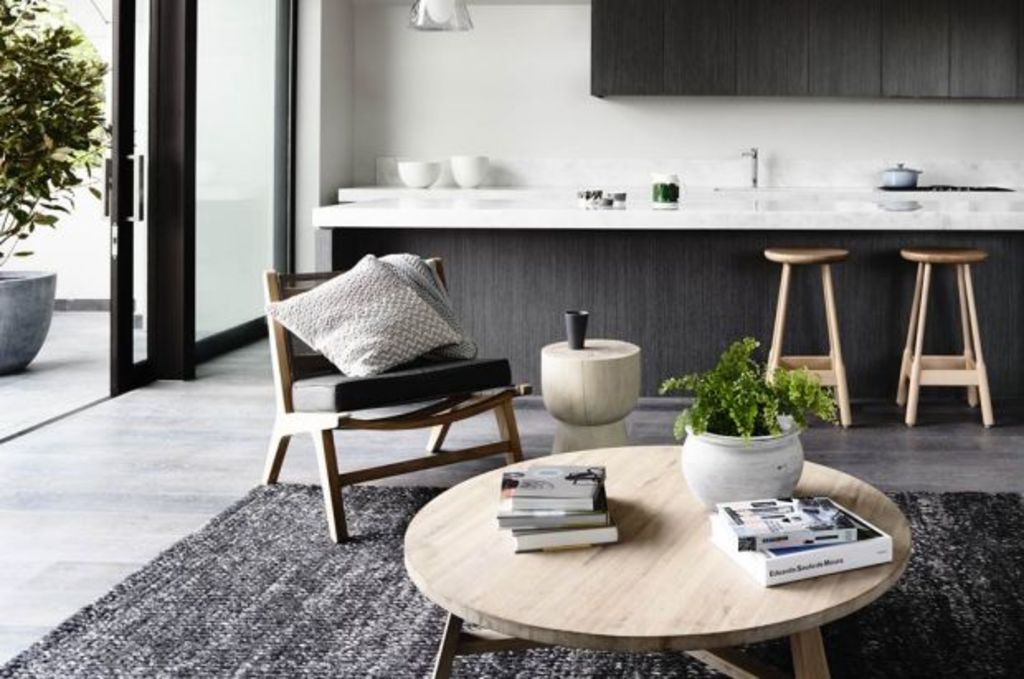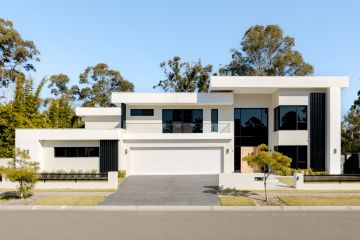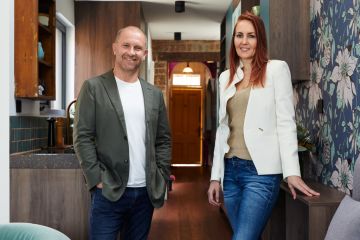A room-by-room guide to renovating for profit

Thinking of renovating your home before selling? You’re not alone. According to the most recent Westpac Renovation Report, increasing the property value, increasing comfort and updating style are the most common reasons for renovating, with the average Australian spending $47,984 per job.
We asked the experts to reveal what renovations offer the most value for money, breaking their advice down room by room.
Facade
A property’s facade is considered the most important element in attracting buyers.
“The house may have the ‘wow factor’ inside but prospective purchasers need to be drawn inside by an appealing facade,” says Ian Soderstrom from Istrom Homes Pty Ltd.
A striking facade helps to establish initial buyer interest and sets the tone for the rest of the property.
“Facades on period homes in particular are ageless … The need for a potential buyer to change it down the track is unlikely if done right,” says Simon Shrimpton, senior sales consultant at Jellis Craig Clifton Hill.
“An investment of anywhere from $3000 to $8000 on a single-fronted Victorian terrace can easily return up to three times the initial investment equating to $10,000 to $25,000.”
A fresh coat of paint on the exterior not only makes a property more attractive, but also gives the impression of a well-maintained home.
“If buyers find that the paintwork is overdue, people will assume that hardly any maintenance has been done on the house,” Jeroen van Zon, CEO of Hiresquare, says.
“The value of your house can easily go up a few thousands of dollars, [or] if you own a Victorian, federation, Californian or post-war style property with lots of wood decoration, the value can easily go up by more than $10.000.”

Photo: Architectureau
Bathroom
“The bathroom is the most heavily criticised room in the house, yet often the smallest and costliest, and therefore the most neglected,” says Wesley Spencer, architect and director of Rara House.
“There are endless worries associated with an un-renovated bathroom. Are there plumbing issues? Is there rotting? Will the floor heights match after removal of the original fittings? These are the type of issues a new home owner would not be prepared to face if they are already mortgaged to the nines and require registered building professionals.”
A complete bathroom renovation can be between $15,000 and $50,000 depending on the room size and quality of finishes selected. However, as the bathroom encompasses several elements, renovations can be tailored to suit a vendor’s budget.
For a luxury property, Soderstrom suggests installing a combined wall-hung vanity unit and hand basin (costing between $1500 and $2500) and a new shower screen (between $1500 and $2000 for a 10mm frameless corner shower base screen).
“A large mirror or even a mirror on an opposing wall instead of tiles can make a small-to-medium-size bathroom feel so much bigger and brighter,” Soderstrom says.
For a high-end $40,000 to $50,000 bathroom renovation, Shrimpton estimates a minimum return of $80,000 to $100,000.
For a more restricted budget, modestly updating the tapware and storage space is a simple way to modernise the bathroom.
“Don’t go overboard with the fixtures … Not everybody needs a built in toilet brush holder and even if they did, having all these items built in takes the fun out of deciding where to put things,” Spencer says.
“People need an element of exploration and excitement when inspecting a home … don’t deprive them of that by dictating every small aspect at no benefit to you.”

Photo: Jane Cameron Architects
Living room
Despite being one of the larger areas of the home, the living room rarely requires more than a paint job before selling.
“To a buyer, the attraction of a home being ‘immediately liveable’ is a big draw card, and new carpet and paint are sometimes the only things required to satisfy that,” Shrimpton says.
“For a quick makeover, consider painting all the existing walls white and installing floating timber floors,” says Justine Stedman, director and principal stylist at Vault Interiors.
According to van Zon, the expected increase in price for a freshly painted living room is 2 to 3 per cent.
For older properties with more confined living spaces, connecting adjacent rooms can also be beneficial.
“People gravitate towards open-plan living areas. Combining living and dining areas by removing walls can really add to the feeling of light, functional space,” Stedman says.
If you require a support beam this can set you back anywhere from $30,000 to $50,000 depending on the scale of your renovation and how much you adapt the current floorplan.”
Original timber floorboards are known to attract buyers, and are often less expensive than installing new carpet.
“If there is a timber strip floor below [or original Baltic pine floorboards] I would remove the carpet or other floor covering and polish the boards,” Soderstrom says.
Kitchen
The kitchen is considered a ”make or break” room for potential buyers.
While it pays to remove any outdated kitchen elements, renovating to match the latest trends runs the risk of alienating buyers.
“Most buyers prefer neutral tones in kitchen design so think white, greys and avoid bold colours, as these can be too taste-specific,” Stedman says.
“If at all possible, try to incorporate a kitchen island (which may mean removing walls). It will be money well spent and will create the open-plan scenario that buyers like.”
According to Soderstrom, a completely new quality kitchen costs between $25,000 and $35,000.
“A return of $50,000 to $70,000 should be expected here,” Shrimpton says.

Photo: Rob Mills Architecture
Bedrooms
Bedrooms can be easily updated by adding new paint, carpets and blinds, but extensive changes are rarely worthwhile for generating profit.
“Buyers ultimately just need to see the scale of the room and what size bed they can fit in it,” Stedman says.
“Built-in wardrobes will add value and appeal to buyers, and if the room is tight, mirrored doors will increase the feeling of space.”
Garden
Updating garden and outdoor spaces adds to a property’s street appeal – an important element of any home on the market.
“Painting or spraying external fences in a very dark grey or green will make the backyard feel larger and blend in with garden foliage,” Soderstrom says.
Adding an alfresco dining area can also be a worthy investment.
“When building these areas, consider adding quality lighting and some form of roof covering [either fixed or retractable] to make the area all-weather friendly,” Stedman says.
Ensuring all areas of the garden appear neat and maintained is generally more valuable than laying a new lawn or significant landscaping.
“Having a definitive path to the front door is key and often overlooked,” Stedman says.
“It may cost anywhere from a few thousand to $5000 to get the front of your property right, but this is money well spent.”
If you don’t have a path, this can be created with stepping-stones, or hedges and woodchips.
“It is a good idea to make narrow walkways at the side and rear of a property look more presentable,” Soderstrom says.
“A lowercost option to paving or concrete are river stones or pebbles spread over a weed barrier cloth … These are much less expensive when delivered in bulk rather than by pre-packaged bags.”

Photo: Jost Architects
Study
Once considered a ”bonus” of an already great property, a study or home office is a valuable drawcard for attracting buyers who work from home.
“The key to making profit from a study is to add ample storage and function,” Stedman says.
“Think inbuilt bookshelves, a floating desk system [and] making sure that there are ample power, data points and task lighting.”
Study nooks are a valuable addition for homes without space for a closed-door office.
“Think about extending your kitchen or wardrobe joinery to create a study nook, either off the kitchen or in a bedroom,” Stedman says.
Laundry
For city buyers in particular where space is scarce, a designated laundry can be very attractive to buyers.
“The laundry can be a major selling point but is often overlooked when refurbishing a property for sale,” Soderstrom says.
Introducing light into the space can be achieved by introducing single light external door.
“This, with a couple of coats of white or off white paint, will make a huge difference to the room,” Soderstrom says.
Soderstrom estimates a complete laundry refurbishment including cupboards, shelves, benchtop, sink, tapware and splashback to cost between $4500 and $7000.
“A return of $8000 to $14,000 should be expected here,” Shrimpton says.
Top home renovating tips:
– Determine if your home is in a development hotspot before renovating. No one wants to pay for a fully renovated home if their plan is only to demolish and rebuild.
– Consider adding an extension instead of renovating existing rooms where space permits.
– Distinguish between what you personally like and what most people like.
– Consult with your real estate agent before commencing works. If the property is a rare find – in a great location with relatively few properties on the market – buyers may pay premium regardless of its condition.
We recommend
We thought you might like
States
Capital Cities
Capital Cities - Rentals
Popular Areas
Allhomes
More







